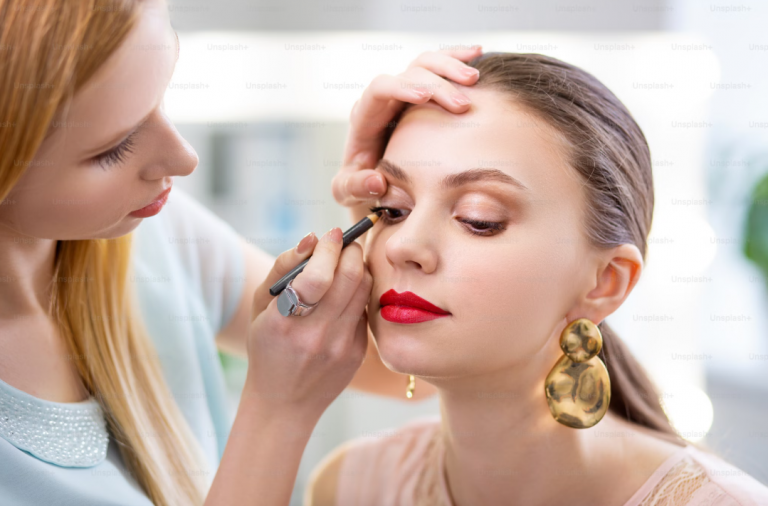When it comes to skincare, exfoliation is a game-changer. But with so many exfoliating products available, it’s easy to get overwhelmed. Should you go natural or opt for chemical exfoliants? This article will walk you through both options, helping you determine which one suits your skin best.
What is Exfoliation?
Exfoliation is the process of removing dead skin cells from the surface of your skin. While our skin naturally sheds these cells, an additional boost through exfoliation helps maintain a radiant and healthy complexion.
Why Exfoliation is Crucial for Healthy Skin
Dead skin cells can clog pores, leading to breakouts and dull skin. Regular exfoliation promotes skin renewal, allowing fresh, healthy skin cells to shine through. It also improves the absorption of other skincare products.
Types of Exfoliation
There are two primary ways to exfoliate: mechanical exfoliation and chemical exfoliation. Let’s explore both.
Mechanical Exfoliation: What Is It?
Mechanical exfoliation involves physically scrubbing the skin using grains or tools to slough off dead skin. This method requires manual effort but can leave your skin feeling smooth instantly.
Chemical Exfoliation: How It Works
Chemical exfoliants use acids or enzymes to dissolve dead skin cells, making it a gentler and more controlled way of exfoliating compared to physical scrubs.
Natural Exfoliants: What Are They?
Natural exfoliants are derived from organic sources such as plants, fruits, or minerals. These ingredients are widely appreciated for their eco-friendliness and skin benefits.
Examples of Natural Exfoliants
1. Sugar Scrubs
Sugar granules help remove dead skin while hydrating your skin, thanks to their natural humectant properties.
2. Ground Coffee
Coffee grounds are great for improving circulation and reducing the appearance of cellulite.
3. Oatmeal
Oatmeal is a gentle exfoliant that’s perfect for sensitive skin, as it soothes and moisturizes.

Benefits of Natural Exfoliants
- Gentle on Skin: Most natural exfoliants are less abrasive than mechanical scrubs.
- Eco-Friendly: No microplastics, ensuring sustainability.
- Nourishing: Many natural exfoliants contain vitamins and minerals that benefit the skin.
Chemical Exfoliants: An Overview
Chemical exfoliants are formulations that use acids or enzymes to dissolve the bonds between dead skin cells, making it easier for them to shed.
Common Types of Chemical Exfoliants
1. Alpha Hydroxy Acids (AHAs)
AHAs, such as glycolic acid and lactic acid, are water-soluble and ideal for dry or sun-damaged skin.
2. Beta Hydroxy Acids (BHAs)
BHAs, like salicylic acid, penetrate deeper into the skin and work best for oily or acne-prone skin.
Benefits of Chemical Exfoliants
- Even Skin Tone: AHAs help reduce hyperpigmentation and fine lines.
- Acne Prevention: BHAs clear out clogged pores effectively.
- Controlled Exfoliation: Chemical exfoliants are available in different concentrations for varied needs.
Natural vs. Chemical Exfoliants: Key Differences
- Texture: Natural exfoliants often have a gritty texture, while chemical exfoliants are smooth liquids or gels.
- Suitability: Natural options are great for beginners, while chemical exfoliants offer deeper results for more experienced users.
- Results: Chemical exfoliants provide faster and more noticeable improvements in skin texture.
Which Skin Types Benefit from Natural Exfoliants?
If you have sensitive or dry skin, natural exfoliants like oatmeal or honey-based scrubs are ideal. They are less likely to irritate your skin compared to chemical counterparts.
When Are Chemical Exfoliants More Effective?
Chemical exfoliants work wonders for oily, acne-prone, or aging skin. BHAs, in particular, are effective for unclogging pores and preventing breakouts.
How to Choose the Right Exfoliant for Your Skin
Understanding your skin type is essential before choosing an exfoliant.
Understanding Your Skin Type
- Dry Skin: Opt for AHAs to boost hydration and exfoliate gently.
- Oily Skin: BHAs are more effective for penetrating oily layers and unclogging pores.
- Sensitive Skin: Stick to gentle natural exfoliants like oatmeal.
Frequency of Use: How Often Should You Exfoliate?
For most people, exfoliating 1-2 times a week is sufficient. Over-exfoliating can damage your skin barrier and cause irritation.
Potential Side Effects and How to Avoid Them
Even the best exfoliants can cause issues if not used properly.
Risks of Over-Exfoliatio
Over-exfoliating can strip away your skin’s natural oils, leading to redness, dryness, and irritation.
Tips to Exfoliate Safely
- Patch Test: Always test new products on a small patch of skin first.
- Follow with Moisturizer: Lock in hydration after exfoliating.
- Avoid Mixing Exfoliants: Don’t use multiple exfoliants in the same routine.
Conclusion
Choosing between natural and chemical exfoliants depends on your skin type, preferences, and goals. If you prefer eco-friendly, gentle exfoliation, natural options are your best bet. On the other hand, if you need targeted solutions for acne or aging, chemical exfoliants might work better. Whichever you choose, consistency and moderation are key to glowing, healthy skin.












+ There are no comments
Add yours